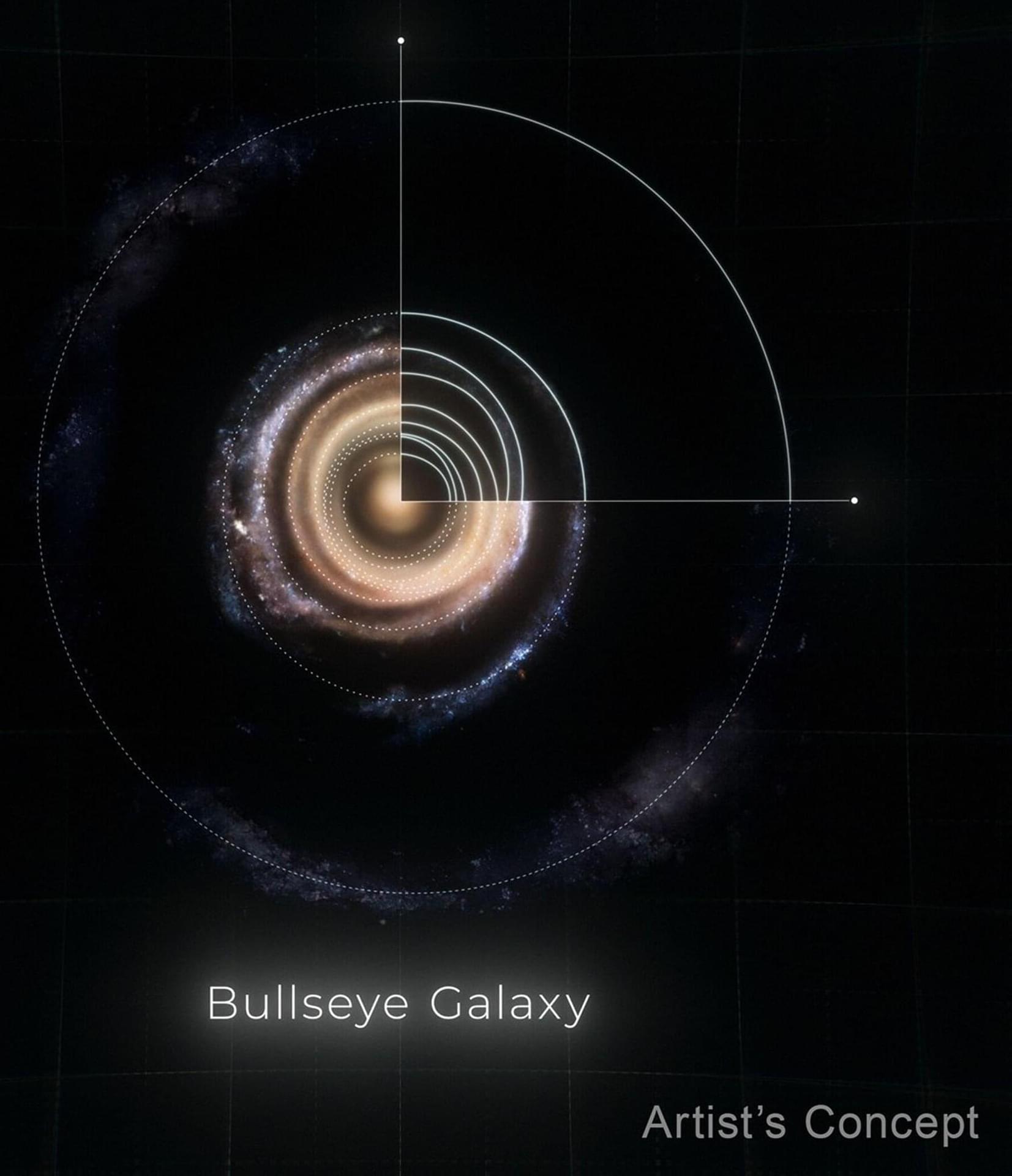NASA’s Hubble Space Telescope has captured a cosmic bullseye. The gargantuan galaxy LEDA 1,313,424 is rippling with nine star-filled rings after an “arrow”—a far smaller blue dwarf galaxy—shot through its heart. Astronomers using Hubble identified eight visible rings, more than previously detected by any telescope in any galaxy, and confirmed a ninth using data from the W. M. Keck Observatory in Hawaii. Previous observations of other galaxies show a maximum of two or three rings.
“This was a serendipitous discovery,” said Imad Pasha, the lead researcher and a doctoral student at Yale University in New Haven, Connecticut. “I was looking at a ground-based imaging survey and when I saw a galaxy with several clear rings, I was immediately drawn to it. I had to stop to investigate it.” The team later nicknamed the galaxy the “Bullseye.”
Hubble and Keck’s follow-up observations also helped the researchers prove which galaxy plunged through the center of the Bullseye—a blue dwarf galaxy to its center-left. This relatively tiny interloper traveled like a dart through the core of the Bullseye about 50 million years ago, leaving rings in its wake like ripples in a pond. A thin trail of gas now links the pair, though they are currently separated by 130,000 light-years.
